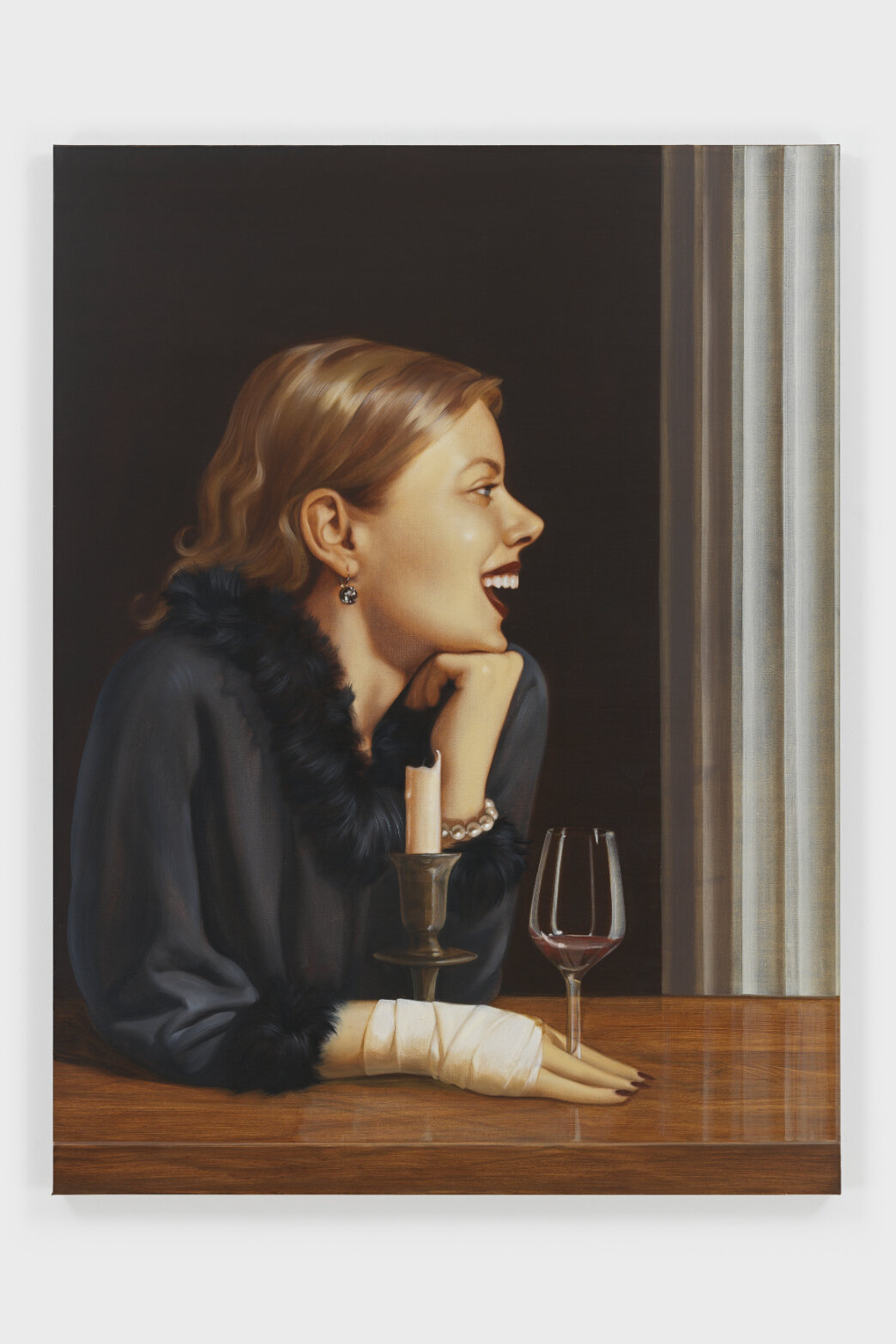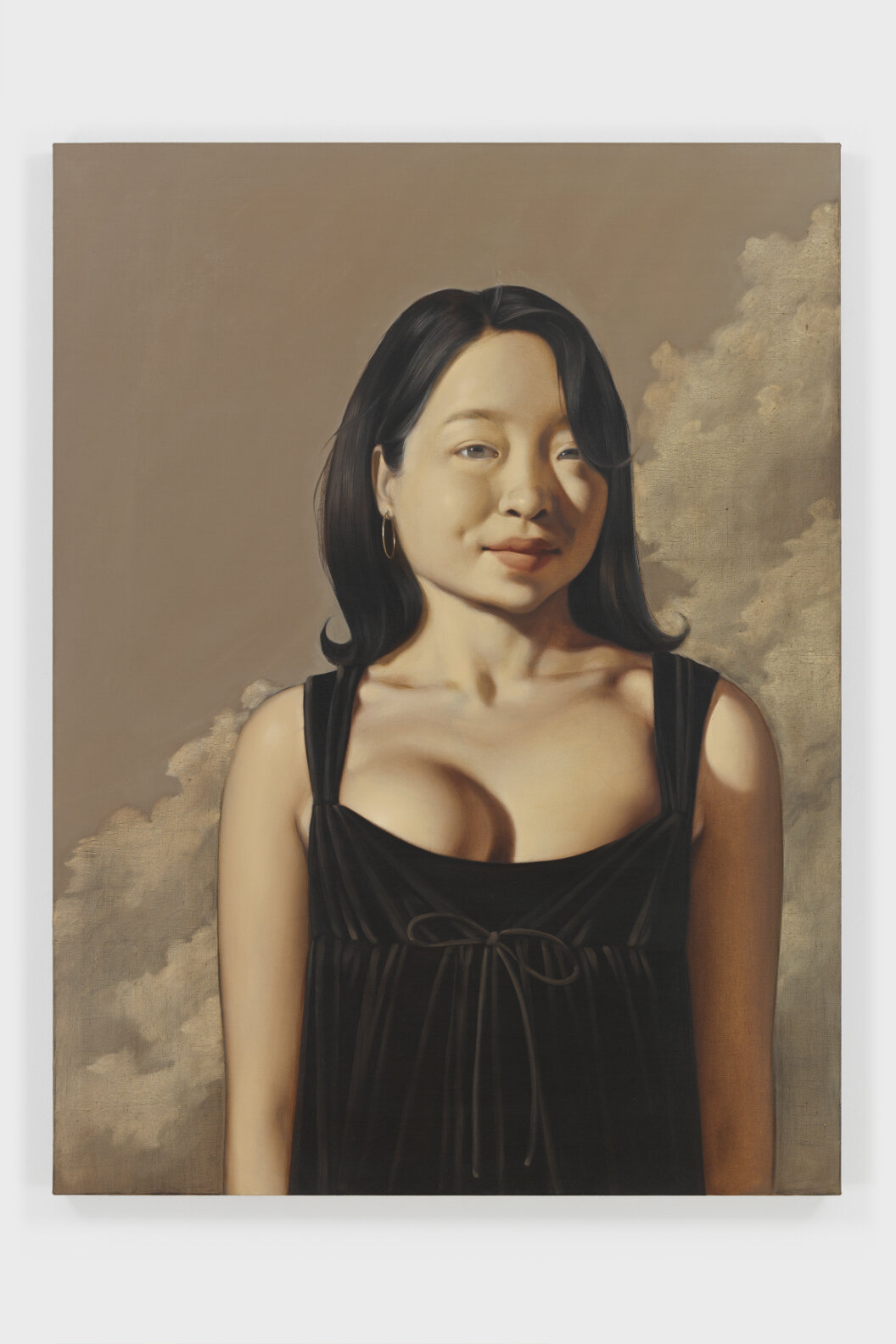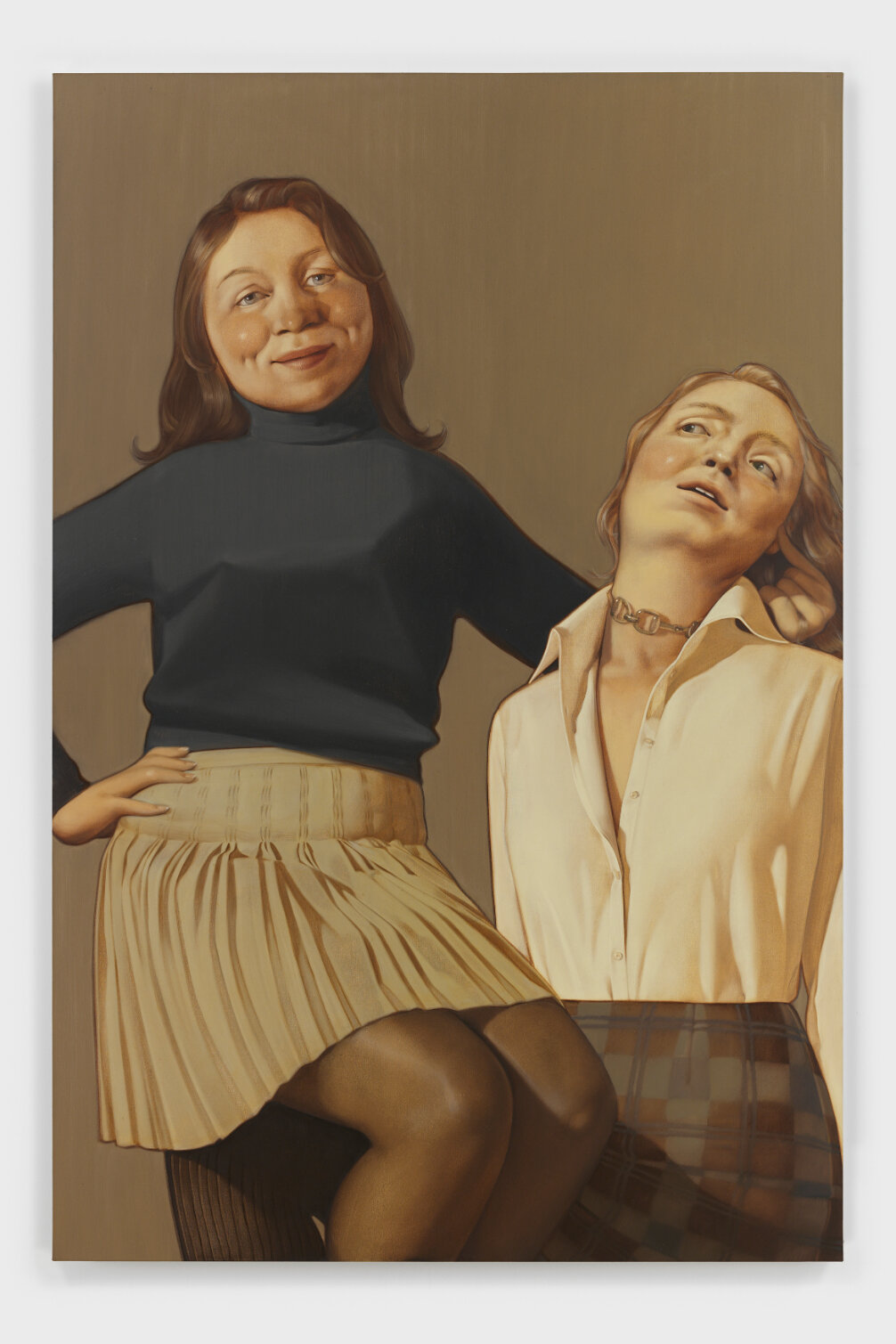Anna Weyant
Buffet, 2020
Oil on linen
36 x 48 inches (91.4 x 121.9 centimeters)
© Anna Weyant, Courtesy of the artist and Blum & Poe, Los Angeles/New York/Tokyo
interview by Bill Powers
Falling, living, laughing, touching—the still, subdued, painterly fantasies of Anna Weyant sway to and fro from the warmly resplendent hues of the Dutch Masters, to the madness of Otto Dix, to the gold of an Instagram selfie’s golden hour. The work, much of it created under the shadow of a global pandemic, are prime moments of a zeitgeist suddenly hollowed by the screeching halt of life as we know it: backgrounds are blackened out, clouds obscure, and curtains drape with muted uncertainties. Everything is vague and everything is a warm oblivion, like the sand of an hourglass exploded and the grains took the shape of a world that resembled its former self. But time doesn’t stop on a dime, it lurches, chugs forward with ghostlike animation even when your foot is on the break, which is what makes Weyant’s paintings so exciting—brushstroke by brushstroke, they are full of that potential energy. In the following interview, Bill Powers and Anna Weyant discuss her upcoming show at Blum & Poe in Los Angeles.
BILL POWERS: Tell me about your solo exhibition in Los Angeles.
ANNA WEYANT: The show is called Loose Screw, which is also the name of the first painting I made for it. Some people assume it’s a self-portrait, but I was actually thinking about Ellen Birkenblit’s screaming woman series, that type of silhouette. I liked the title because it’s kind of a joke on me, but when I told my mom she was like, “Honey, don’t ruin your show with such an ugly name.” Sorry, mom.
POWERS: Why are most of your paintings some shade of sepia?
WEYANT: I don’t want to be distracted by color. I prefer a more muted palette.
POWERS: Do you ever worry about being too close in your painting style to John Currin?
WEYANT: I wish. He’s so much better than me. I remember going to a book signing he did at the Marc Jacob’s store on Bleecker Street. When I got to the front of the line, John asked me if I wanted the book inscribed to anyone in particular. I was so starstruck that I just smiled like an idiot and said nothing.
POWERS: I ask because a painting of yours like “Slumber,” the shape of the figure’s mouth reminds me of the central figure in Currin’s Thanksgiving painting, the oval of the lips.
WEYANT: It’s such a different scenario, though. My painting is of a woman having an orgasm in her sleep. I was nervous it might be too cheesy, so I folded her arms across her chest almost like she’s laying in state, funerary. A little creepiness can save a painting sometimes. And then the gravity of the candle flicker behind her is off which makes you question the reality of the narrative.
POWERS: You have made some paintings of very young girls: one stuffing her bra, another in underwear. Do you worry about the sexualization of children?
WEYANT: I think of it more along the lines of a before and after picture or a Clark Kent vs. Superman situation. I can remember being a little girl and wanting boobs and craving the power of womanhood. I imagined a level of agency and confidence that I would one day inhabit, which—if I’m being honest—eludes me even now. So those paintings are about looking back. And then, sometimes I like to make companion paintings so the girl stuffing her bra might be the same person we see in my painting “Head,” which is heavy on cleavage.
Anna Weyant
Falling Woman, 2020
Oil on linen
48 x 36 inches (121.9 x 91.4 centimeters)
© Anna Weyant, Courtesy of the artist and Blum & Poe, Los Angeles/New York/Tokyo
POWERS: And there was a hot stove composition you made two versions of.
WEYANT: Well, I did a drawing that was almost like a PSA of a young girl’s finger burning on a hot coil. Then, for the painting of the same scene, I made it a woman’s index finger only she’s really pressing down on the hot stove as if to assert it’s her prerogative to hurt herself.
Anna Weyant
Untitled, 2019
Colored pencil on paper
15 x 11 in.
Courtesy of the artist and Half Gallery
POWERS: Do you always make a study of the painting first?
WEYANT: I make a sketch, but it might not be rendered in great detail. And, of course, the image can change as I develop the narrative. I wanted to make a painting of a woman falling down a flight of stairs. It started with an Edward Gorey picture of a girl tripping down this very grand staircase. In my painting, I dressed the woman in more formal attire and I cropped in tightly. She appears upside down, almost like a Baselitz figure, only the pose is meant to be naturally-occuring, not intentionally flipped as he does. The idea was that artifice can’t prevent you from making a complete fool of yourself. Even in a Balenciaga dress, there’s still a chance you might face-plant down a flight of stairs holding a glass of champagne. I guess embarrassment can be a real equalizer in that way.
POWERS: I loved the still life of flowers you made with a straw sticking out of the bouquet.
WEYANT: I could paint flowers all day long. I thought it was interesting to add a straw like someone was trying to suck the water out of the vase. If you look at that painting as memento mori then the addition of the straw is almost an accelerator to kill the flowers faster. In another still life, I cut all the buds off the top so it’s like a murdered bouquet with just beheaded stems sticking out and a sharp knife resting on the table beside them. Of course, all cut flowers are dead and there’s an inherent violence in how they became so. The first flower painting I ever showed with Blum & Poe was called “JAWS.” It was such a traditional painting that I found it unnerving. And I always liked that line from the movie about there’s something in the water. The sinister can often be masked by beauty or even tranquility.
POWERS: Your first solo show in 2019 was called Welcome to the Dollhouse. Was that meant to be an overt reference to your own childhood?
WEYANT: I did make a dollhouse painting, but more as an homage to Robert Gober. Memories by nature are a kind of container. And I love when you see dollhouses in murder mysteries or horror movies. They are never used as symbols of comfort. It’s always a bad omen somehow. And it’s weird how when you paint something in miniature it creates a kind of emotional distance that lets you get freakier with the particulars: a set of legs poking out from under a bed.
POWERS: Who would you cite as contemporary influences on your work?
WEYANT: I mean, we already discussed John Currin. I named a painting John once after him, only it was of a little girl with a candelabra. I was referencing a painting he had made called Anna so I thought of it like an inside joke—you know, trading names—even though it’s impossible for anyone but me to get the joke. And even then, it’s not very funny. The other artist I think about a lot is Francesca Woodman, the mood of her photographs and how she captured a woman’s body, the bends and folds against the light.
POWERS: You did a portrait of the painter Cynthia Talmadge for your first solo show as well.
WEYANT: Yes, I worked as her studio assistant one summer and I always thought she had a timeless look about her, like she could have been transported from the 1940s. I love when people have a sensibility about them that reminds you of some bygone era. It’s rare.
POWERS: How do you decide if a work is successful?
WEYANT: I think it needs to feel credible as an image. Often humor is another good indicator. I made a painting of a white pencil snapped in half and called it “Lines” because at first glance it looks like two lines of cocaine. Art is my drug!
Loose Screw is on view by appointment March 23 - May 1 @ Blum & Poe 2727 S. La Cienega Boulevard, Los Angeles
Anna Weyant
Stepped on a spider, 2020
Oil on canvas
20 x 16 in.
Courtesy of the artist and Half Gallery








